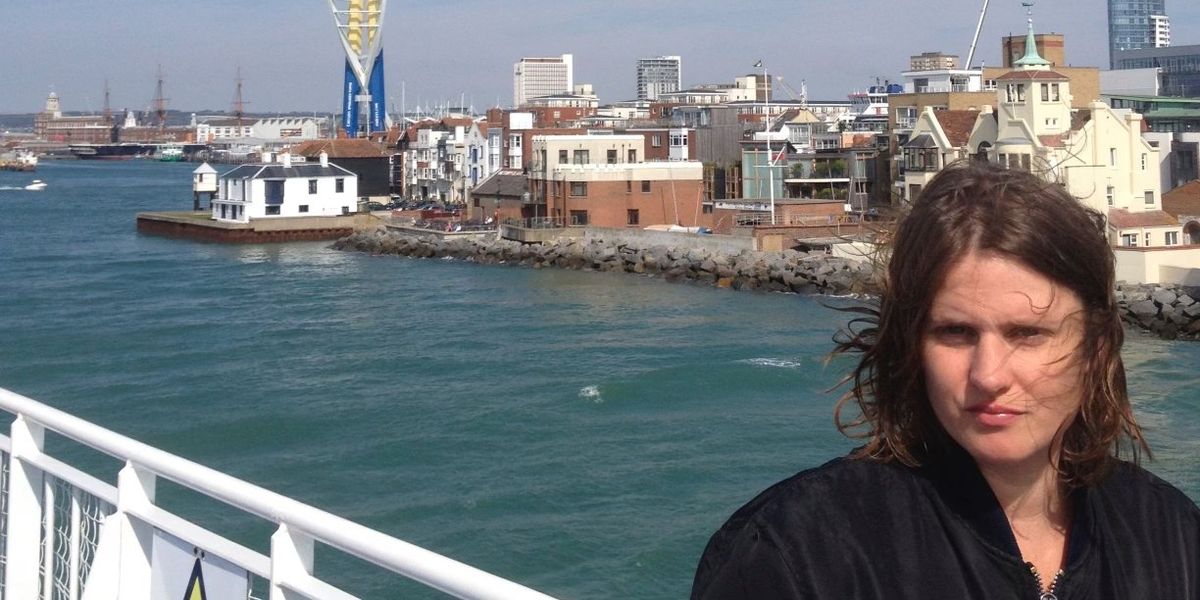
A Ride in Joanne Robertson's 'Blue Car'
BY
Kenna McCafferty | May 26, 2023

Joanne Robertson’s newest album Blue Car shines headlights across hills. In the familiar inertia of a rumbling engine, Robertson reimagines traditional folk song storytelling. Replacing vivid pictures with passing sensations, the intimate images that populate her landscape disintegrate and become universal. “When I write music, I travel in my head to places,” Robertson explains. “When improvising my lyrics, I’ll imagine different spaces and I often go to them into a car.”
Under its tires, Robertson’s world sprawls once removed from reality. Whether it’s a blue car, a saloon or a certain light in the forest, her songs roll the windows down on scenes of imagined memories — like visiting her great great grandmother, a sex worker in the 1800s. Other times in writing, Robertson thinks of an imaginary figure: a lone cigar smoker in a hazy dive bar, she offers as an example. Ash pilling his lapel, Robertson’s gaze follows the smoke licking his shoulders in a drunken dance.
These lyrics, which Robertson fondly calls “scribbles,” are then “open for interpretation” from listeners. Influenced by the dialectical ringing of Cocteau Twins and Kurt Cobain’s garbled singing style, her words and delivery are part of a personal language that she keeps close to her chest.
Robertson’s ear for music first formed in the bars of Blackpool, a seaside town with a “trashy, wild vibe.” Recalling Tache, a “metal bar slash proper ’80s golf club,” Robertson says live music influenced her early years and today’s improvisational approach.
“I was really into that jazzy style: white shirts and short hair, and I would wear leather trousers,” she explains, despite never claiming just one scene. “I was quite my own thing,” with taste spanning from Beatnik poetry to jungle dance music, and punk rock to experimental.
This is perhaps why the artist’s creative process is as loose as the final product, be it a painting, a song or a poem. Even so, “I am always at the center of myself, somehow,” Robertson says. “Thank God, because I have one of those imaginations where if I wasn’t, I think I’d get really dizzy.”
Blue Car rides dizzying roads, with Robertson helping to pull out the memories of her listeners. On “Street Empty” I sit in the front seat of my mom’s teal Ford Focus for the first time as streets give way to sprawling forest. Thumbs pressed past the point of pressure, trees flash green across my inner eyelids and a Cranberries “Greatest Hits” CD warbles over the stereo.
Robertson stretches melodies past their final destination. There is a sense, not of missing the point, but obscuring it all together. This type of momentum — a directionless longing — is what interests her, not its resolution. So Blue Car meanders, unwinding the hard edges of its subjects.
The album art, made with Robertson’s husband Kool Music, embodies this sentiment. “That’s the thing about music and abstract painting,” Robertson says. “There isn’t an image that’s fixed and I’m really interested in that. There were times when the narrative of my songs felt much more inspired by my paintings, and maybe my paintings inspired some of the songs, but now they’re really in harmony together.”
Robertson continues: “I’ve just been looking for the last 20 minutes at my child’s drawing. I thought it was one of my sketches, I thought it was going to be a master painting. That’s so cool when your brain is so fucked up that it goes Remember that drawing you made? and it wasn’t even your drawing. That’s pretty cool.”
Blue Car is stripped to its parts, memories supplanted in the scenes that glare across its windows. Over the course of the “diary-style” album, Blue Car calls itself a pair of jeans, a river, the tides creeping across a bay — welcoming in its bareness and aimless in its desire. Robertson’s lifelong fascinations wash over her listeners, rippled under the hum of a perfumed exhaust purr.
“One of my earliest paintings that I remember really being a shift in my work was of a car boot open and a girl looking at a landscape.”
Throughout May, PAPER will roll out our final projects under the most recent editorial team. These pieces continue pushing forward our mission to provide a platform for fresh talent and important stories too often overlooked. From the subjects to the creatives behind the images, our hope is for you to discover new things and be inspired by what you see. As always, thank you for showing up and being part of our community. –Justin Moran, Editor-in-Chief
Photo courtesy of Aase Nielsen